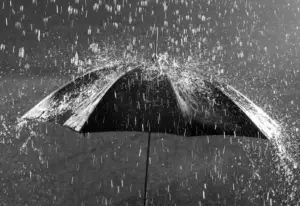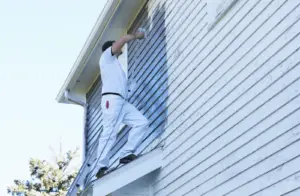As monsoon season approaches in Arizona, it’s time to get serious about protecting your home. The heavy rains and strong winds that come with monsoons can do a number on your roof if it’s not properly prepared.
That’s why it’s crucial to take some proactive steps to minimize the risk of monsoon roofing damage. In this article, we’ll break down some practical tips to help you get your roof ready for whatever the monsoon season throws your way. So let’s roll up our sleeves and dive into how you can ensure your roof is up to the challenge of Arizona’s monsoon season.
When Does Monsoon Season Occur in Arizona?
Monsoon season in Arizona typically occurs from late June through September. During this period, the state experiences a significant increase in moisture levels, leading to the formation of thunderstorms, heavy rainfall, and strong winds.
These weather phenomena are a result of the seasonal shift in wind patterns, which bring moisture from the Gulf of California and the Gulf of Mexico into the region. As a result, monsoon season is characterized by unpredictable weather patterns and can pose various challenges for residents, including potential damage to roofs and other structures.
How Do Monsoons Damage Roofing?
Monsoons, with their intense weather conditions, can inflict significant damage on roofing structures. Here’s a closer look at the various ways they cause monsoon roof damage:
Heavy Rainfall
Monsoon storms often unleash torrents of rain, which can pose a serious threat to roofs. When drainage systems become overwhelmed, water can accumulate on the roof’s surface.
Over time, this standing water can seep through cracks, gaps, or compromised areas, leading to leaks and water damage inside the home. Additionally, the weight of pooled water can strain the roof structure, potentially causing sagging or even collapse in severe cases.
Wind Damage
Monsoon winds are notorious for their strength, capable of dislodging or damaging roofing materials. Shingles, tiles, or metal panels may be ripped off or loosened by gusts of wind, leaving the underlying roof substrate exposed.
Once the protective outer layer is compromised, the roof becomes susceptible to water intrusion and further damage. Moreover, strong winds can create uplift forces, lifting sections of the roof and causing additional stress on fasteners and support structures.
Debris Impact
During monsoon storms, high winds can propel debris such as branches, leaves, or airborne objects onto roofs. The impact of these projectiles can cause significant damage to roofing materials, resulting in dents, punctures, or tears.
Even seemingly minor damage can compromise the roof’s waterproofing integrity, allowing water to penetrate and cause leaks. Regularly clearing debris from gutters and roof surfaces can help mitigate the risk of damage during monsoon season.
Tree Damage
Trees adjacent to properties pose a potential hazard to roofs during monsoon season. Strong winds can cause branches to break off and crash onto rooftops, leading to structural damage and punctures.
In extreme cases, entire trees may topple over, directly impacting the roof and causing extensive destruction. Trimming tree branches away from the roofline and regularly inspecting trees for signs of instability can reduce the risk of tree-related roof damage during monsoon season.
Lightning Strikes
Monsoon storms often feature intense lightning activity, posing a fire risk and potential damage to roofing systems. Lightning strikes can directly hit rooftops, damaging roofing materials and creating pathways for fire to spread.
Additionally, the electrical conductivity of metal roofing materials can attract lightning strikes, increasing the likelihood of damage. Installing lightning protection systems and ensuring proper grounding can help mitigate the risk of lightning-related roof damage during monsoon season.
How Can You Prepare Your Roof for Monsoon Season in Arizona?
Preparing your roof for monsoon season is crucial to safeguard your home against the potential damage that intense weather conditions can bring. Here’s a step-by-step guide to help you fortify your roof and protect your property.
1. Roof Inspection
Start by scheduling a comprehensive inspection with 1 by 1 Roof, Solar, & Paint. Our expert team will thoroughly assess your roof for any existing issues or vulnerabilities. We’ll look for signs of damage such as cracked or missing shingles or tiles, loose flashing, deteriorated sealant around penetrations, or sagging areas. Addressing these issues promptly can prevent them from worsening during monsoon storms.
2. Repair Any Damage
After identifying potential problem areas during the inspection, make necessary repairs to strengthen the roof’s integrity. Replace damaged or missing shingles, secure loose flashing or fasteners, and seal any gaps or cracks to prevent water infiltration. Pay special attention to areas prone to leaks, such as valleys, flashing intersections, and roof penetrations.
3. Clean Gutters and Downspouts
Ensure that gutters and downspouts are clear of debris to facilitate proper drainage during heavy rainfall. Clogged gutters can lead to water backup and overflow onto the roof, increasing the risk of water damage and leaks. Regularly clean out leaves, branches, and other debris to maintain optimal gutter function.
4. Trim Overhanging Branches
Trim back overhanging tree branches that pose a threat to your roof during monsoon season. Strong winds can cause branches to break off and damage roofing materials, leading to potential leaks and structural issues. By keeping trees pruned and away from the roofline, you can reduce the risk of tree-related damage.
5. Secure Loose Items
Secure or store loose items such as patio furniture, garden decorations, and outdoor equipment to prevent them from becoming airborne projectiles during monsoon storms. High winds can propel these objects onto the roof, causing damage to roofing materials and increasing the risk of monsoon roofing damage and monsoon roof damage.
6. Inspect Attic Ventilation
Ensure that attic ventilation systems are functioning correctly to prevent moisture buildup and heat retention in the attic space. Proper ventilation helps regulate temperature and humidity levels, reducing the risk of condensation and mold growth that can compromise the integrity of the roof deck and insulation.
6. Consider Protective Measures
Depending on your location and the severity of monsoon weather in your area, consider investing in additional protective measures for your roof. This may include installing impact-resistant roofing materials, reinforcing roof-to-wall connections, or adding storm-resistant features such as hurricane straps or wind-resistant ridge vents.
Is Your Roof Ready for Monsoon Season?
Ready to fortify your roof for the upcoming monsoon season? Contact 1 by 1 Roof, Solar, & Paint today for expert roof inspection , repair, and replacement services. Our team of professionals is dedicated to ensuring the durability and resilience of your roof, so you can rest easy knowing your home is protected. Don’t wait until you need emergency roof repair —take proactive steps to prepare your roof for monsoon season now.




